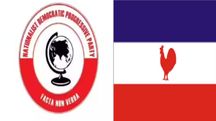Nagaland University team discovers plant compound that speeds up diabetic wound healing
Nagaland University scientists have found a plant compound that speeds up the healing of diabetic wounds. This discovery could revolutionise treatment options for diabetic patients struggling with slow recovery

Researchers at Nagaland University have identified Sinapic acid, a naturally occurring plant compound, as a potential game-changer in diabetic wound treatment. The study shows that this compound, when taken orally, can significantly accelerate wound healing in diabetic conditions — a global first, according to the research team.
Published in Nature Scientific Reports, the study reveals that Sinapic acid promotes healing by activating the SIRT1 pathway, which is crucial for tissue repair, new blood vessel formation, and inflammation control. This breakthrough could pave the way for a safe, natural, and affordable therapy for diabetic patients struggling with slow-healing wounds.
The multidisciplinary work brought together scientists from Nagaland University and Lovely Professional University (LPU), Punjab, combining expertise in biotechnology, pharmacology, and biochemistry. The research was led by Prof Pranav Kumar Prabhakar, Department of Biotechnology, Nagaland University, with contributions from Rupal Dubey, Sourbh Suren Garg, Navneet Khurana, and Jeena Gupta of LPU.
Speaking on the significance of the discovery, Prof Jagadish K Patnaik, Vice-Chancellor of Nagaland University, said the finding underscores the university’s commitment to “innovation rooted in nature” and its role in tackling major health challenges.
Explaining the research, Prof Prabhakar noted that diabetes continues to affect hundreds of millions worldwide, often leading to complications such as diabetic foot ulcers and amputations. “We set out seeking a safe, plant-based alternative,” he said. “Sinapic acid, a natural antioxidant found in edible plants, showed remarkable ability to repair tissue, reduce inflammation, and promote angiogenesis in diabetic wounds.”
Interestingly, the team found that a lower dose (20 mg/kg) was more effective than a higher one (40 mg/kg), an inverted dose-response that could help refine future dosage strategies.
The discovery carries major implications for diabetic care — from reducing amputation risks to offering a low-cost, natural oral therapy for patients, particularly in rural and resource-limited areas.
The next research phase will focus on detailed molecular pathway studies, safety profiling, and formulation of capsule or nutraceutical tablet forms, followed by pilot clinical trials to test real-world efficacy and safety.
Copyright©2025 Living Media India Limited. For reprint rights: Syndications Today









